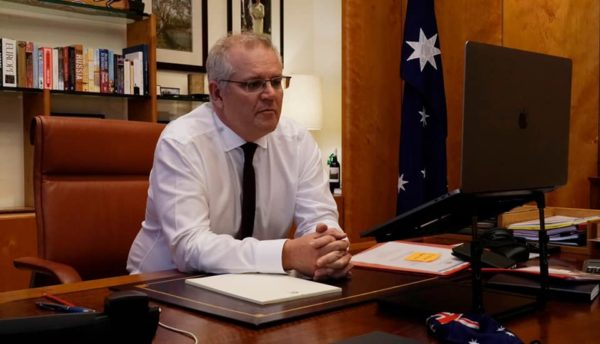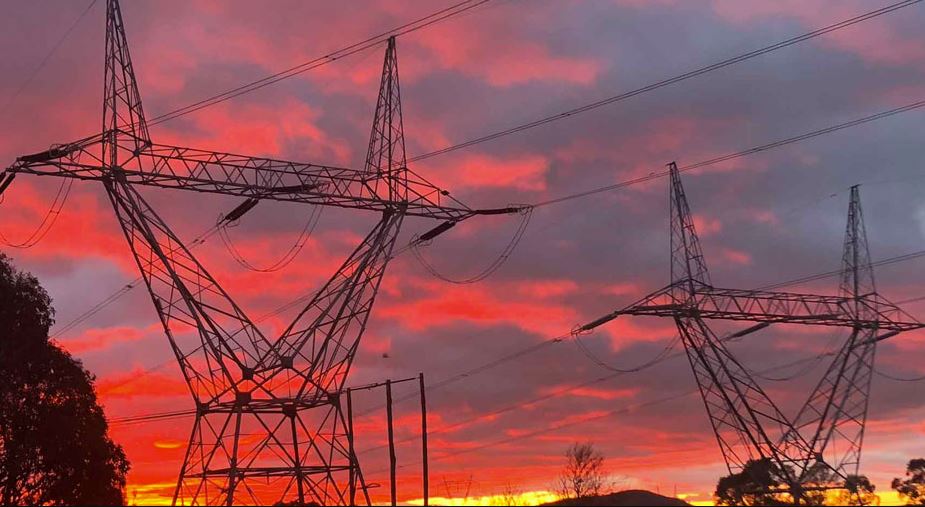A new report released by independent thinktank ClimateWorks Australia shows the nation is on track to reduce carbon emissions by up to 42% by 2030 on the back of state and territory government policies but the federal government needs to set a target of about 70% to ensure Australia contributes to limiting average global warming to 1.5°C above pre-industrial levels.
The federal government currently has committed to reduce emissions by 26-28% by 2030 and Morrison has expressed his desire for Australia to reach net-zero emissions “preferably” by 2050.
Morrison is expected to unveil an updated policy ahead of the United Nations Climate Change Conference (COP26) in Glasgow from October 31-November 12 but internal division within the government has so far prevented him from doing so.
While Morrison and his Coalition colleagues continue to vacillate about a net-zero emissions commitment, ClimateWorks systems lead Rupert Posner said the work being done by state and territory governments shows Australia is capable of meeting global expectations for climate action.
“Current state and territory 2030 emissions reduction commitments give the country an estimated de-facto target of 37-42% below 2005 levels,” he said.
“While this is short of what is needed for the world to limit warming to 1.5 degrees, it is higher than Australia’s current commitment of 26-28%.”

Image: Facebook
ClimateWorks’ State and territory climate action: Leading policies and programs report focuses on the policies and actions of state and territory governments and shows that “rapid decarbonisation is possible for Australia”, but warns it is only achievable if Australia steps up its ambitions.
“The window for keeping global temperature rise to below 1.5 degrees is narrowing, but the goal is still achievable if ambitious benchmarks of progress are met this decade,” Posner said.
ClimateWorks modelling shows that to meet the Paris goals, Australia must reduce total emissions by between 48-74% by 2030. This would entail renewables generating between 70-79% of the country’s electricity by the end of the decade while electric vehicles (EVs) would need to account for 50-76% of new car sales.
“The good news is that most emissions reduction technologies continue to outperform expectations, and the costs are dropping and will continue to drop as their uptake increases,” Posner said.
“Governments can help put Australia in the fast lane in the race to zero emissions, through mainstreaming low-carbon solutions.”
While the federal government continues to deliberate about its climate policy, all Australian state and territory governments are now committed to net zero emissions by 2050 or earlier.
ClimateWorks said that since the beginning of 2020, states and territories have allocated billions of dollars of funding to emissions reduction measures and have made significant regulatory and legislative changes.
States and territories on track
The New South Wales government has set a target of net-zero emissions by 2050, with an interim target of 50% emissions reduction by 2030, matching the ambitions of rival clean energy powerhouse South Australia.
The Australian Capital Territory is aiming to cut its emissions by 65-75% by 2030, while Victoria has legislated to reduce emissions by 45-50% by the end of the decade.
Queensland has announced it will cut emissions by at least 30% by 2030 while Tasmania this week announced it would legislate a net-zero emissions target for 2030.
ClimateWorks estimates the state and territory targets will translate to an Australia-wide renewable electricity target of 55% for 2030, and said governments are taking substantial action to ensure their implementation.
As of July 2021, renewable electricity projects in the pipeline equate to more than 10 GW of new generation and 1.4 GW of new storage.
“Each state or territory in Australia has set a target and introduced an implementation strategy,” Posner said.
“They’ve built important momentum. The country now has the chance to capitalise on this.”
Government out of step with community
The ClimateWorks analysis comes after a separate report released on Wednesday by the Australia Institute’s Climate & Energy Program shows concern about global warming is at an all-time high, illustrating just how isolated current federal government policy is from community sentiment.
The annual Climate of the Nation benchmark report, which has tracked Australian attitudes on climate change since 2007, shows 75% of Australians are concerned about climate change.
Seven out of every 10 people surveyed (69%) think Australia should set targets and implement domestic action to help limit global warming to 1.5-2°C and achieve net-zero emissions and the vast majority of Australians (82%) support the phase-out of coal fired power stations.
Only 12% of Australians prefer investment in gas to power Australia’s economic recovery, while the majority of Australians (63%) prefer investment in renewables as a pathway for economic recovery.
Australia Institute climate and energy director Richie Merzian said there had been a shift in how Australians see bold climate action, with three in four Australians agreeing it will bring opportunities for new jobs and investments.
“The majority of Australians want the federal government to move now on decisive climate action, rather than wait for other countries to act,” he said.
“Australians have an over-inflated view of the coal and fossil gas sector, when it comes to jobs and tax income. Yet even with this outsized view of the role of the fossil fuel industry in the Australian economy, there is extraordinarily little support for any ‘gas-fired recovery’ and increasing majority support for further renewable power investment.”
This content is protected by copyright and may not be reused. If you want to cooperate with us and would like to reuse some of our content, please contact: editors@pv-magazine.com.









1 comment
By submitting this form you agree to pv magazine using your data for the purposes of publishing your comment.
Your personal data will only be disclosed or otherwise transmitted to third parties for the purposes of spam filtering or if this is necessary for technical maintenance of the website. Any other transfer to third parties will not take place unless this is justified on the basis of applicable data protection regulations or if pv magazine is legally obliged to do so.
You may revoke this consent at any time with effect for the future, in which case your personal data will be deleted immediately. Otherwise, your data will be deleted if pv magazine has processed your request or the purpose of data storage is fulfilled.
Further information on data privacy can be found in our Data Protection Policy.